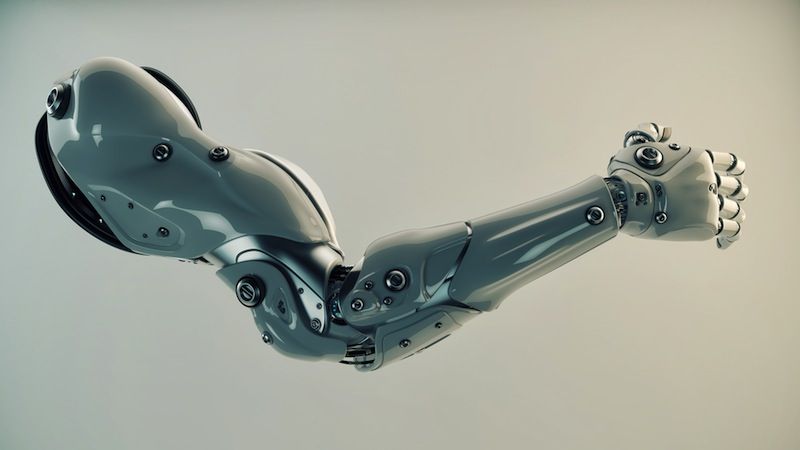Supreme Court Confusion: Why Judging Distance Is Tough

The justices of the Supreme Court may be among the best legal minds in the country, but they have no eye for distances — and new research may help explain why.
During oral arguments Wednesday (Jan. 15) in a case about the constitutionality of laws prohibiting protestors from gathering close to abortion clinic entrances, the justices were stumped at the size of the 35-foot-long (10.6 meters) buffer zone in question.
"It's pretty much this courtroom, kind of," ABC News quoted Associate Justice Elena Kagan as saying. In fact, the courtroom is more than 90 feet (30 m) long. After a back-and-forth discussion, the deputy solicitor arguing the case clarified that the no-go zone is the size of the 3-point zone on an NBA basketball court.
But judging distances and depth may be trickier than it seems. A recent study, published Oct. 23 in the Journal of Neuroscience, finds that people's depth perception depends on their perception of their arm's length. Trick someone into thinking their arm is shorter or longer, and you can influence how they perceive distances between two objects. [Optical Illusions: A Gallery of Visual Tricks]
Making judgments
Depth perception, the ability to judge the distances of objects from one another, is an important ability; without it, one would have no way of knowing that a marble in their hand and a basketball 6 feet away were actually two different sizes.
The human brain doesn't quite get depth right, however. Research has shown that people overestimate the distance of an object closer than a few tens of centimeters away, and underestimate it for objects more than a few tens of centimeters away, where 1 cm is about 4 inches, according to study researcher Fulvio Domini, professor of cognitive linguistic and psychological sciences at Brown University, and his colleagues. This might help explain why a big distance (like 35 feet) is hard to gauge.
Sign up for the Live Science daily newsletter now
Get the world’s most fascinating discoveries delivered straight to your inbox.
The area between these two boundaries is the sweet spot of depth perception, which makes sense: It's the region in which we're most likely to reach for something. Because of this link between arm's length and depth perception, researchers had theorized that depth perception has to be flexible, in order to accommodate the changing length of the arm as people grow. [The 7 Biggest Mysteries of the Human Body]
"When children start touching and playing with things, they don't just do it at any distance. They do it at a small range of distances," Domini, who is also a senior scientist collaborator at the Istituto Italiano di Techologia (IIT) in Italy, said in a statement.
Perhaps, the researchers reasoned, the brain figures out exact distances in these important regions and then just extrapolates the rest.
Flexible perception
To test the theory, Domini and his colleagues first had 41 volunteers complete one of three perception tests — all in the dark, so they couldn't see their arms or hands. In the first, the volunteers used a computer mouse to judge how far three rods in a triangular configuration were from one another. In the second, volunteers judged distances of these three rods by using their finger and thumb. The third group was given a tactile test, in which they felt either one or two simultaneous gentle pinpricks on their forearms. The volunteers had to say whether they'd felt one poke or two.
After the tests, the researchers "trained" the volunteers to conduct virtual experiments: They placed motion-capture tags on the participants' forearms, and asked them to reach for a virtual cylinder on a computer screen. Dots on the screen told them where their arm was in the virtual space. In some cases, the dots were accurate. In others, they showed the most outstretched finger as 6 in. (15 cm) farther out than it really was. As a result, the volunteers felt their arms were longer than they really were.
Here's where things got weird: The volunteers tricked into thinking their arms were longer became better at judging the distance between both objects placed farther away from the viewer. In effect, the change in the perception of their arm's length had shifted their depth perception sweet spot.
The participants also got better at distinguishing one skin poke from two. This change in people's tactile abilities probably had to do with the perception of arm length, too, the researchers wrote. The brain's internal image of the arm changed when volunteers were tricked into thinking the arm was longer, and that internal image change, in turn, seems to have caused a change in sensitivity.
"Even in adulthood, sensory systems are not fixed structures with immutable functions," the researchers wrote in the paper describing the findings. The results show how flexible perception really is. They also may be important for researchers designing robotic prosthetics and human-controlled robots such as those used by surgeons.
Follow Stephanie Pappas on Twitter and Google+. Follow us @livescience, Facebook & Google+. Original article on LiveScience.

Stephanie Pappas is a contributing writer for Live Science, covering topics ranging from geoscience to archaeology to the human brain and behavior. She was previously a senior writer for Live Science but is now a freelancer based in Denver, Colorado, and regularly contributes to Scientific American and The Monitor, the monthly magazine of the American Psychological Association. Stephanie received a bachelor's degree in psychology from the University of South Carolina and a graduate certificate in science communication from the University of California, Santa Cruz.











